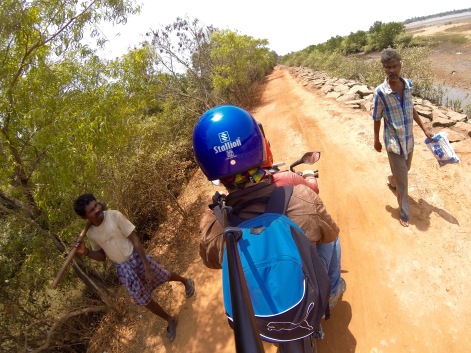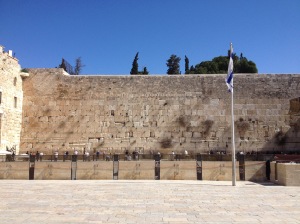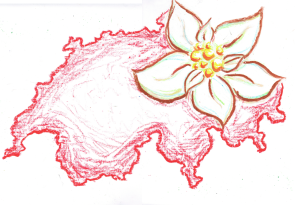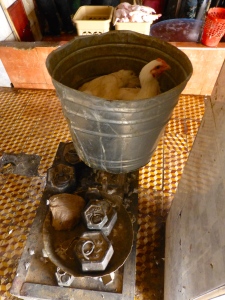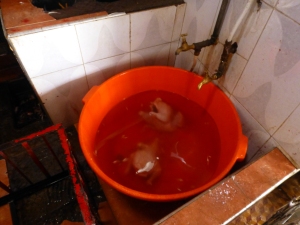The art of haggling belongs to the streets of any Arab market (souk) as the camel does into the desert (on review, such a lame comparison… suggest something in the comments and I will change it). For Morocco as well, guidebooks and travel agencies will advertise the experience of negotiating a price as one of the perks of traveling to the African Orient.
A few points ahead before I share my first hardcore haggling experience:
The rule of thumb that you should finally pay about a third of the initial quoted price is crap. First, this might work exactly as long as only Western tourists know about this “rule” and none of the local shopkeepers — basically you assume being ahead of their livelong business experience while in vacation mode.
Second, if you walk into a food market in your board shorts and try to pay 30 cents for a 1€ water bottle you either be the laughing stock of the street or the shopkeeper will more or less polite advise you to get your water elsewhere.
Another thing is to view the whole process as a way to make both parties happy with the transaction. That means, you should more or less have an idea how much you want to pay for that wooden camel/water pipe/carpet. The friendly fellow having said item on display will try to sell as high as possible, however, will be happy if the wooden camel/water pipe/carpet goes on a lower price. Never ever(!) will he sell under the value he purchased. Guaranteed. So don’t feel bad, even if you think you are the caliph of the souk, you will not rip him off.
On the other hand, don’t feel bad if you find that your buddy just bought the same item for half the price somewhat down the street. No, nobody cheated you. You were happy with your purchase and willing to pay the price you paid, remember? Seller and buyer were happy with the transaction. That was the point of the whole haggling and you might have even been offered a cup of tea to keep energized until you meet in the middle of your price ideas. The situation of your friend somewhat down the street was a completely different play. So instead of trying to get everything as cheap as possible, know what you want to pay and otherwise leave it. Do you really need a third pair of Berber moccasins?
These things said, let me take you to Marrakech, home to one of the most vibrant souks in the Arab world and known for quite persistent shopkeepers.
The day I decided to go souvenir shopping, I first bought a leather notebook for 7€ to write down what happens. He wanted 12€, I wanted 5€. I was happy, he was happy. Equipped and matured in experience I launched myself into the jewellery district. My travel companion’s birthday was coming up and a pair of earrings or a bracelet seemed a suitable present as well as easy to pack and transport instead of lets say a full on Moroccan tea set.
So, first task: Don’t buy crap.
I’m not very good with shiny things as I lack them in my own wardrobe, however, if something is falling apart when you touch it and the initial price is 10€, its probably not worth 1€ or even the space it will take in your bag. No thanks.
Lets us look at pieces behind glass. The additional security — necessary or not — make them seem more expensive. As usual, the shopkeeper assures me I’m looking at top quality, i.e. silver and emeralds. Could I tell if something is made of silver and emeralds? Not really (shouldn’t there be a stamp or something?). Would I recognize a blunt iron or tin piece? Yes. Perfect.
So now we got all that. I have two or three pairs of earrings in my hand that look nice and are probably of decent quality. Nothing fancy or too precious, but still a nice gift and pretty to wear.

Your typical shop in the Souk.
Now comes the hardest part: The price!
Should I ask or suggest a price? I ask. 380Dhs (38€). And of course he will make a special price for “mon ami” (my friend): 10Dhs (1€) less. Uhm nope.
I know that’s not a real price. Think. Would you pay half? Now much would you pay at home if no haggling was involved. I decide that its about 100Dhs (10€) worth to me.
He asks me to make a counteroffer. I just ignore it and look at some other pieces. Was that rude? I bet he has seen it all. I tell him its far too much.
“Tell me a fair price!” he says.
Dont’t. He will come down on his own if I let him hang for a bit and maybe talk a little about silver and the future purpose of the piece as a present. As it ought to be the perfect gift, of course, I assure him that I took a whole day off and intend to visit every shop in Marrakech to find the perfect piece and compare over and over again.
Surprisingly, I just happen to stumble into the shop with “the finest jewellery in the whole town”, one thing our friend (I should have asked his name) is damn sure about.
“Give me a price.” he insists.
Nope. We are not going to play your game. I will have to say my price of 10€ vs. 38€ and after a while we would meet in the middle. 24€ for a piece where I cannot verify its quality? No way. 10€ it is. But lets not tell him yet.
At this point, any other conversation (all in French) is impossible as it is steadily interrupted more and more desperate (and loud) “Donne-moi un prix!” (Give me a price!) or “Combien tu veux payer?” (How much do you want to pay?).
No answer.
Really? You lose your ground that easily? Or have you seen this a million times already and just let me believe I got you? I should have taken some psychology classes. My strategy of silence seems to be working. After about 20mins of talking, he has still no clue how much I would be willing to pay, just that 38€ is “far too much”.
I’m starting to enjoy this!
I tell him that I would go look around and compare some other places and think about it. I’m sure he heard that one before. Still, there is plenty of completion and chance are that I find something similar.
“Give me a price for buying now!”
His fine French changes into broken English from time to time. Most can shop owners can speak a basic German, Spanish or Italian, too. Sometimes even Russian or Japanese. And they are quite good at spotting languages and shout their phrases to the surprised tourists.
Alright, the price. He still doesn’t know how much I would actually pay. The thing is, if I want to meet at 10€ I would have to offer him close to nothing. He wouldn’t take me serious or even feel insulted. I want to remain friendly.
I tell him I thought about spending between 80Dhs and 120 Dhs (8€-12€), but that it would be okay if this price doesn’t work with him and I will just keep looking.
He laughs. I say nothing. Silence means serious. Lets just let him punch in the air a little.
“Donne-moi un prix serieux!” (Give me a real price).
“Not 380 (38€) and not 120 (12€). A fair price.”
Didn’t I say between 80Dhs and 120 Dhs? Did I ever believe he would settle in the middle of my price range? Not really, but it felt less bold putting it this way. Did it work? Lets see.
It follows a series of counter offers. First small, then pretty drastic. We are now at at about 200Dhs (20€).
I nod and answer something not related to the price. Then tell him I would think it over.
“Tell me a priece to buy it now!”
Well don’t you know that already? I just told you. So lets try this:
Me: I think about it a little.
Him: No, give me a price for now!
Me: What do you mean?
(I think we are getting to the final stage of the battle).
Him (louder): A price without thinking it over. To buy it right here.
Me (louder): What? Right here?
Him (louder): Yes, right here, right now!
Me: 120 (12€) and I will buy it right here and right now!
I either expected this to go on like this for another while or me leaving the shop and go look elsewhere. However, I hardly finished my thought when, without hesitation, he goes “waha!” (okay, deal) and shakes my hand.
I admit he got me fairly surprised.
We walk to the cashier and I pay the price agreed. Take the earnings out of the bag again. Did he switch them? No, he wants to sell at the highest possible margin, he is no thief and quite proud of his business.
Still the quick end made me suspicious. Is it fake jewellery in the end? Did I still fall for it after 45mins of haggling? I know he wouldn’t sell if he didn’t make a profit?
I walk back to the hotel, anxious I bought some crap. As I arrive I hit up the receptionist and ask him what he thinks about my purchase. As the owner of the Riad, a lady of about 50 years, is right behind we proceed to ask her to take a look:
“Yes, its silver.” she says.
I ask her what it was worth.
“How much did you pay?”
Damnit. I wanted her opinion but I don’t succeed in making her name an independent price. Is she afraid I would be put off if I figure out I paid too much or is the piece fake after all?
She stays polite and asks again how much I paid.
Well Iguess there is no point. “120Dhs”, I say.
“100Dhs?”
“No, 120Dhs.”
“Oui, c’est un bon prix.” (Yes, thats a good price).
In retrospective I would probably have behaved the same way.
So did I win then? I have no idea, but I’m happy and that was the goal in the beginning remember?
And my dear Marrakech shop owner: If I find a blog of yours on how you sold that one tourist some overpriced jewelery and still let him believe he struck a bargain, I will pay you the double price for the story to go on this page!











